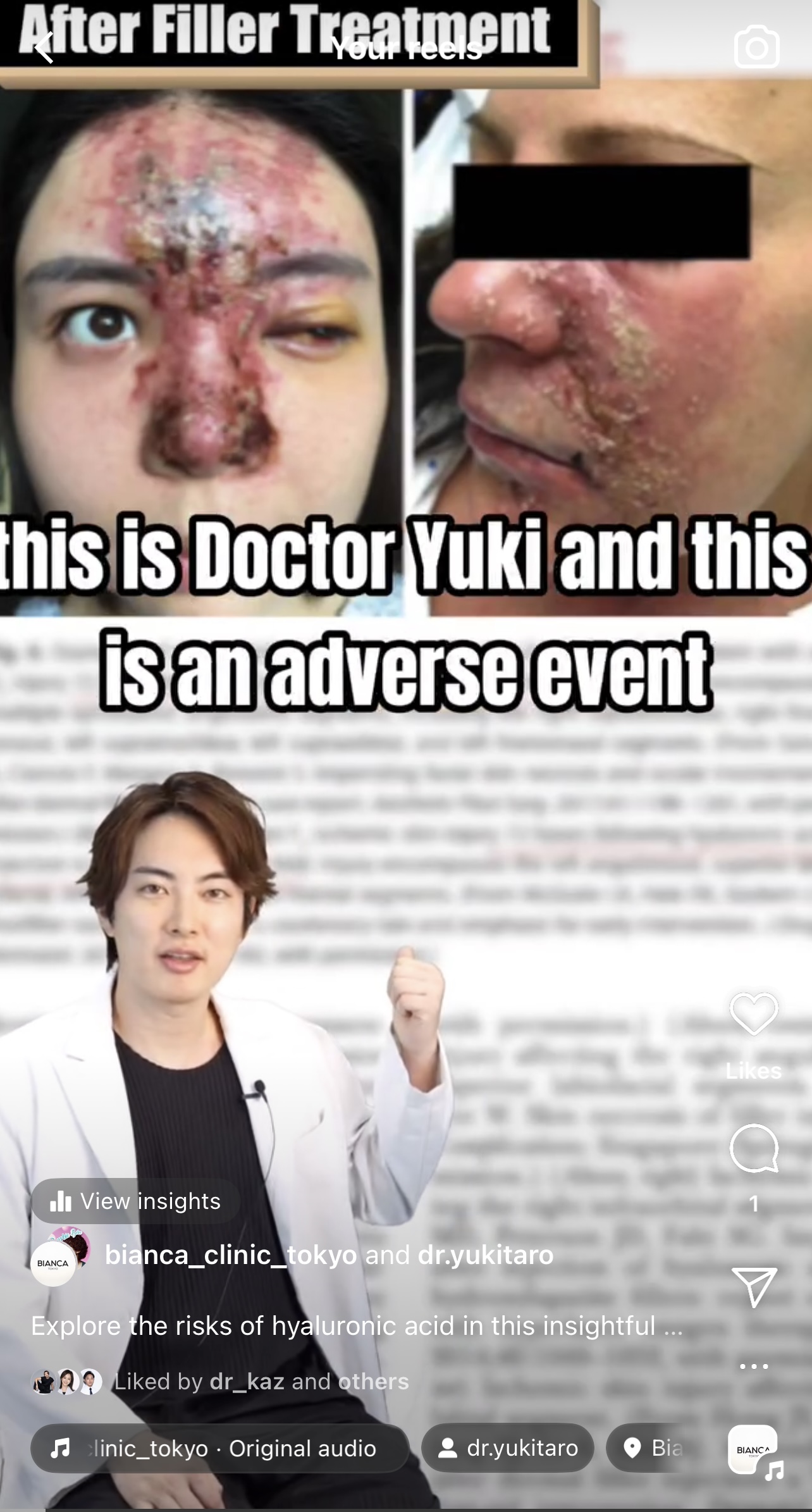Hi, this is Dr. Yuki! Hyaluronic acid (HA) fillers have become a popular choice for achieving a youthful, rejuvenated appearance. With its ability to restore volume and smooth wrinkles, HA is loved by both practitioners and patients. However, like any cosmetic procedure, HA injections carry potential risks and complications that need careful consideration. Among these, one of the most serious concerns is the risk of vascular embolism.
Common Complications of Hyaluronic Acid Fillers
Although hyaluronic acid is generally safe due to its natural presence in the skin, complications can arise. Some of the most common include:
- Swelling and Bruising: These are the most typical side effects and usually subside within a few days. They occur due to the trauma from the needle and the body’s reaction to the foreign substance.
- Nodules and Lumps: In some cases, poor technique or uneven distribution of the filler can cause lumps under the skin. These are often easily treatable but can be a cosmetic nuisance.
- Infection: While rare, infections can occur if proper sterilization techniques aren’t followed. Redness, swelling, or pus at the injection site may indicate an infection that needs immediate medical attention.
- Allergic Reactions: Though hyaluronic acid is biocompatible, some individuals may have allergic reactions, leading to itching, redness, or inflammation at the injection site.
Vascular Complications: The Risk of Embolism
The most serious complication associated with HA fillers is vascular embolism, which occurs when the filler is accidentally injected into a blood vessel, blocking blood flow. This can lead to severe consequences, depending on the location and extent of the blockage:
- Ischemia and Necrosis: If blood flow to an area of tissue is obstructed, the tissue may become ischemic, meaning it doesn’t get enough oxygen. Without immediate intervention, this can lead to tissue death (necrosis). In facial treatments, areas like the nose and forehead are particularly vulnerable.
- Blindness: One of the most devastating complications is blindness, which can occur if the filler material enters blood vessels that supply the eye. Even a small amount of filler in the wrong place can lead to irreversible vision loss.
- Stroke: Although extremely rare, embolism can lead to a stroke if the filler material migrates into larger arteries supplying the brain. This is a medical emergency that requires immediate attention.

https://www.instagram.com/dr.yukitaro
How to Prevent and Manage Embolism
Preventing vascular complications is a top priority for any skilled injector. Here are some measures used to reduce the risk:
- Understanding Anatomy: A deep understanding of facial anatomy and the location of key blood vessels is crucial for avoiding high-risk areas.
- Slow Injection: Injecting the filler slowly and with low pressure minimizes the risk of accidentally injecting into a vessel.
- Aspirating Before Injection: By pulling back the syringe before injecting, the injector can check if they have entered a blood vessel, allowing them to stop before any damage is done.
- Using a Cannula: Instead of a needle, using a blunt-tipped cannula can reduce the risk of vascular complications by pushing aside blood vessels rather than penetrating them.


